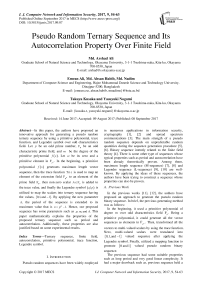Pseudo Random Ternary Sequence and Its Autocorrelation Property Over Finite Field
Автор: Md. Arshad Ali, Emran Ali, Md. Ahsan Habib, Md. Nadim, Takuya Kusaka, Yasuyuki Nogami
Журнал: International Journal of Computer Network and Information Security(IJCNIS) @ijcnis
Статья в выпуске: 9 vol.9, 2017 года.
Бесплатный доступ
In this paper, the authors have proposed an innovative approach for generating a pseudo random ternary sequence by using a primitive polynomial, trace function, and Legendre symbol over odd characteristics field. Let p be an odd prime number, FP be an odd characteristic prime field, and m be the degree of the primitive polynomial f(x) Let w be its zero and a primitive element in Fpm* In the beginning, a primitive polynomial f(x) generates maximum length vector sequence, then the trace function Tr(.) is used to map an element of the extension field (Fpm) to an element of the prime field Fp then non-zero scalar A∈Fp is added to the trace value, and finally the Legendre symbol (a/p) is utilized to map the scalars into ternary sequence having the values, {0,1,and -1} By applying the new parameter A the period of the sequence is extended to its maximum value that is n=pm-1 Hence, our proposed sequence has some parameters such as p,m,and A This paper mathematically explains the properties of the proposed ternary sequence such as period and autocorrelation. Additionally, these properties are also justified based on some experimental results.
Ternary sequence, finite field, autocorrelation, primitive polynomial, trace function, Legendre symbol
Короткий адрес: https://sciup.org/15011897
IDR: 15011897
Текст научной статьи Pseudo Random Ternary Sequence and Its Autocorrelation Property Over Finite Field
Published Online September 2017 in MECS DOI: 10.5815/ijcnis.2017.09.07
- 1
if x = 0
else if x = nj .
otherwise
T = { t .} for i = 0,1,2, _ , n - 1, _ , (18)
where t e { 0,1, -1 } and n is the period of the proposed ternary sequence such as n = pm -1.
F. Autocorrelation
The autocorrelation RT ( x ) of the ternary sequence
T is generally defined as follows:
The proof for each case of (23) is explained below. It should be noted that, here n = ( pm - 1 )/( p - 1 ) , j = 0,1,2,3, ^ , and i is mainly appeared at summations and holds the relation 0 < i < n = ( pm - 1 ) .
B.1. The case of x = 0
In this case, the autocorrelation of the ternary sequence T is calculated as follows:
n - 1
i = 0
n - 1
Rt (x) = E i=0
/Р
Tr ( to i ) + A/ ) /p
where, x represents the shift value.
-
III. Proposed Ternary Sequence
This paper proposes a ternary sequence T . This section introduces its definition and then mathematically shows the autocorrelation property of this proposed sequence.
The case that Tr ( to i ) = 0 appears pm -1 times. When the shift value is equal to 0, Tr ( to i + x ) and Tr ( to ) are the same. The Legendre symbol returns only { 0,1, and -1 } values. Based on this condition, all the possible values become ( 0 x 0 ) = 0, ( 1x1 ) = 1, and
( -1х-1 ) = 1 . Depending on whether or not
Tr ( ю ' ) + A = 0, (24) becomes as follows:
Rt(x)= 2 0 + 2
Тг ( ю ) + A =0 Tr ( ю ' ) + A #0
= pm1 • 0 + (pm-1 - pm-1)-1,(25)
where, ' = 0 ~ p m - 2. Thus, the following relation is obtained for the case of x = 0,
RT (x) = pm -1- pm-1.(26)
-
B.2. The case of x = nj
* p m - 1 ) / ( p - 1 )
Let g be a generator of F m . Then gis a non-zero element in the prime field F and is also a generator of F *. Therefore, from here on g(p )(p ) will be denoted as gˆ. Based on the linearity of the trace function, the autocorrelation is calculated as follows:
' g ir ( ю ) + a
n - 1
R t ( X ) = 2
' = 0
k
-
• X # ( - ( g j ) х A ( 1 - g j ) , because of
g- j Tr ( ю ' ) + A # 0, thus Y cannot be 0.
-
• A ( 1 - gj ) X 71 does not become 0, thus Y # gj .
-
• X = A , where Tr ( Ю ) = 0 appears ( p m -1 - 1 )
times. Therefore, the case that Y = 1 appears ( pm -1 - 1 ) times.
-
• The other cases, where Y is the element of F - { 0,1, gj } appears p m -1 times.
From the above conditions, following formula is obtained:
p -1 j
RT( x ) = У| /1- p m -1 1 ^ g / I- / . (31)
T p pp
Y =0 V/ k ' ' 7 V
According to the property of the Legendre symbol, following relation is obtained for the case of x = nij ,
R ( x ) = - pm - 11 g/ I- 1
t ' ' * i / p j
= ( - 1) j + 1 p m - 1 - 1.
According to the Property 1 and (13), the above equation can be rewritten as-
-
B.3. The default case (otherw se)
In this case, the autocorrelation is calculated by-
Rt (X )= 2 0 +2 0 + gjTr(ю)+ A=0 Tr(ю)+A=0
g JTr ( ю ' ) + A#0
'§JTr (ю')+A/' /p k 7
' Tr ( ю ' ) + A/
/p k 7
Tr ( ю ' ) + A #0
Depending on the Property 3 and Property 4,
R t ( X ) = 2
g j Tr ( Ю ) + A # 0
Tr ( Ю ) + A # 0

Let, X = Tr ( Ю ) + A , then X # 0, the above equation is rewritten as,
RT ( x ) =
g j Tr ( ю ) + a #0
f( g
+ A ( 1 - g
) XVA / p
Тг ( ю ' ) + A #0
n - 1
R t ( x ) = 2
I = 0
r Tr (ю + x ) + A/
/ p k

Here x is not divisible by ni and o x does not belong to F p .
By using Ю , consider the following basis W in
W = {®x,1, a2, a3,^, am-1}.(34)
Again let B be the dual basis of W .
B = {Д„ в1, £2,..., Pm-1}.(35)
Assume that Ю can be represented like this- m-1
l = 0
Now, let ( g j + A ( 1 - g j ) X, 1 be denoted by Y . Then following conditions and facts should be noted:
Then, Ю+x is expressed by- m-1 i+x xx to — 2 ci, 1P1® .
l — 0
Based on the Property 6, the initial value of Tr( to ) is given by, Tr( to ) — c ,. Hence W and B are the dual basis to each other, then the value of Tr( ® ' + x ) is given by Tr( to i + x ) — c 0. Substituting the values of Tr( to ) and Tr( ® ' + x ) in (33), the following equation is obtained:
Let f ( x ) be x 4 + x 3 + x 2 + 2 x + 2, which a primitive polynomial over F . Here, the period of the sequence T becomes pm -1 — 80 and the sequence becomes as follows:
T — {01111111010110011111
11100111110011111010 10000100101101110101 10111110001101110111}. (42)
i — 0
The autocorrelation of T is given as follows:
By considering all the cases inside the Legendre symbol, the above equation can be rewritten as-
|
"53 |
if x — 0 |
||
|
R T , ( X ) — ' |
26 |
else if x — 40 |
(43) |
|
- 1 |
otherwise, |
RT(x)— Z ci,0 + A #0
c ,1 + A *0
+ Z 0 + Z 0 + Z 0. (39)
c ,o + A — 0 с,- о + A * 0 с,- о + A — 0
c i ,1 + A * 0 c i ,1 + A — 0 c i ,1 + A — 0
Since to cannot represent the zero vector, the number of vectors such that cz 0 — 0 and ciX — 0 is one less than that of the other combinations like cz0 — 0 and cn — 1. Thus, the last subtraction is required in (40).

c , ,1 + A # 0
p-1 р-V/ ,\ / i pm-2 SZ ((ab/pMУ■)}
According to the Property 2, the first part of above (40) will become 0 . Thus, the following relation is obtained,

d + A # 0
and Fig. 1 shows its autocorrelation graph.
-
B. Analysis for p — 7, m — 3 and A — 6
Let f ( x ) be x 3 + 6 x 2 + 6 x + 2, which a primitive polynomial over F . Here, the period of the sequence T becomes pm -1 — 342 and the sequence becomes as flows:
T6 — {10111100111101111111111011111101
1111100100111010111110101011111111 1110111111111111011111011011111111 1111111110111111111111001111111111 1111111111111111111011111111111111 1111111111111111101101101111111111 1111101110011111111110111111111101 1111111101111111010111011111101111 011010111111110111111110111111111111}. (44)
The autocorrelation of T is given as follows:
Finally, the autocorrelation of the ternary sequence T in (23) is proven.
|
■ 293 |
if x — 0 |
|
|
R T 6 ( x ) — - |
48 |
else if x — 57,171,285 |
|
- 50 |
else if x — 144,228 |
|
|
- 1 |
otherwise, |
-
IV. Result and Discussion
This section experimentally shows the autocorrelation property of the proposed ternary sequence with some examples. The notation T , denotes the proposed sequence with the parameter A — 2. Throughout this section, { -1 } is represented by { 1 } .
-
A. Analysisfor p — 3, m — 4 and A — 2
and Fig. 2 shows its autocorrelation graph.
C. Analysis for p — 11, m — 2 and A — 5
Let f ( x ) be x 2 + 5 x + 2, which a primitive polynomial over F . Here, the period of the sequence T5 becomes pm -1 —120 and the sequence becomes as follows:
T = {101111110110111111111111111111
1 1111011110111 1 1 1 11111 11111001
111111011111111111111111101011}. (46)
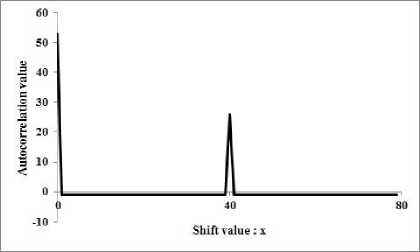
Fig.1. RT ( x ) with p = 3, m = 4 and A = 2.
-
D. Analysis for p = 13, m = 2 and A = 10
Let f ( x ) be x 2 + 4 x + 11, which a primitive polynomial over F . Here, the period of the sequence T10 becomes p m -1 = 168 and the sequence becomes as follows:
T10 = {1110111111010111111111111111
1 111 1 1 11 11101 1 11 11 1011011111 1111111111111111111111111111 1111111111111111111111101111 1011111111111001110111111111
11 11110111111111011111 1 11 1 11}. (48)
The autocorrelation of T is given as follows:
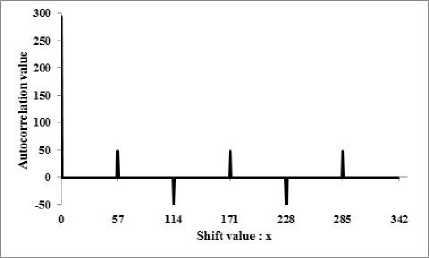
Fig.2. RT ( x ) with p = 7, m = 3 and A = 6.
|
' 155 |
if x = 0 |
|
|
R ( x ) = - |
12 |
else if x = 14,42,70,98,126,154 ^ |
|
- 14 |
else if x = 28,56,84,112,140 |
|
|
- 1 |
otherwise, |
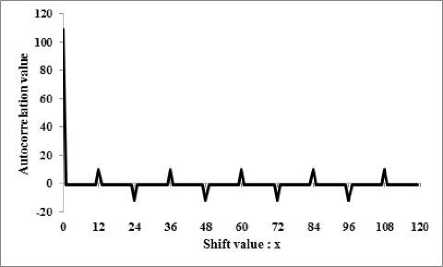
Fig.3. RT ( x ) with p = 11, m = 2 and A = 5.
In this sequence 0,1,and - 1 appears 11, 54, and 55 times, respectively. This also ensures the identical appearance of 1 and - 1 in the whole sequence. The autocorrelation of T is given as follows:
and Fig. 4 shows its autocorrelation graph.
-
E. Analysis for p = 17, m = 2 and A = 8
Let f (x) be x2 +15 x +12, which a primitive polynomial or F . Here, the period of the sequence T becomes pm -1 = 288 and the sequence becomes as follows:
T = {11111111111011101111111111111111
11111111111111111111111111111111 11 1011110011111111111111101 11111 1111111111111111 1111110111111111 11110111111111111111111111111111 11111111111111111111111111101111 11111111110111111111111111111111 11110111111101111111111111111110
11111111110101111110110111111111}. (50)
The autocorrelation of T is given as follows:
271 if x = 0
[ 109
R t , ( x ) = '
- 18
else if x = 18,54,90,126,162,198,234,270
R T 5 ( X ) =
- 12
—
if x = 0
else if x = 12,36,60,84,108 else if x = 24,48,72,96
otherwise,
- 1
else if x = 36,72,108,144,180,216,252 otherwise,
and Fig. 3 shows its autocorrelation graph.
and Fig. 5 shows its autocorrelation graph.
-
F. Features of the sequence
By observing all the above autocorrelation graphs, it is found that the period n of the sequence becomes
maximum by setting the parameters p , m , and non-zero A . The autocorrelation of the proposed sequence has been mathematically shown in (23). This equation also theoretically guarantees the maximum period.
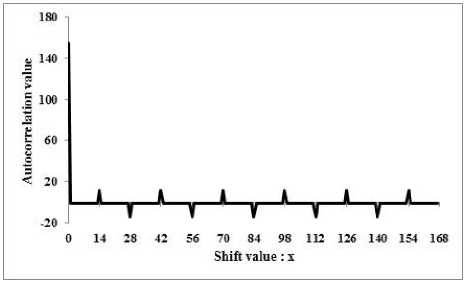
Fig.4. RT|o ( x ) with p = 13, m = 2 and A = 10.
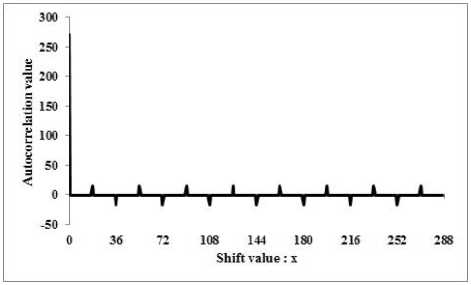
Fig.5. RT g( x ) with p = 17, m = 2 and A = 8.
One crucial point about the non-zero prime field scalar value A is that, by adding this new parameter A does not have any impact in the autocorrelation calculation because (23) confirms that autocorrelation does not depend on the value of A . However, each individual value of A is responsible for generating completely different sequences.
In addition, for each case, the autocorrelation has ( p - 1 ) peaks only such as in Fig. 1 - Fig. 5. Among all the peaks, only one of them has the maximum value. As example, in Fig. 2 the maximum peak value is 293 that corresponds to the case of x = 0 in (23). The other ( p - 2 ) smaller peaks conforms the case of x = nj in (23). Except the ( p - 1 ) peaks, other parts in the autocorrelation graph always have a constant value of - 1, which corresponds to the last case in (23). Therefore, the autocorrelation graph can be explained by (23).
The autocorrelation and cross-correlation properties of a sequence are important in the code division multiple access (CDMA) communication systems, where the ternary sequence of having low values of the autocorrelation property can be used as a signature sequence for each user. Additionally, this can improve the self-synchronization capability of the CDMA communication system [14]–[16].
-
V. Conclusion and Future Works
In this paper, the authors have proposed an approach to generate a ternary sequence by utilizing a primitive polynomial, trace function, Legendre symbol, and a nonzero scalar A over the odd characteristic prime field F m . Choosing the parameters p,m, and A, the number of peaks and the length of the sequences are appropriately controlled. In addition, the mathematical proof of typical features like the period and autocorrelation are also explained in this paper. Furthermore, these properties of the proposed sequence are also observed based on some experimental results.
As future works, the authors will evaluate the linear complexity of their proposed pseudo random ternary sequence. In addition, more efficient calculation procedure will be introduced. Furthermore, the evaluation of the cross-correlation property of the proposed sequence will be one of their important future works.
Список литературы Pseudo Random Ternary Sequence and Its Autocorrelation Property Over Finite Field
- W. Cusick, C. Ding, and A. Renvall, Stream Ciphers and Number Theory, North-Holland Mathematical Library. Elsevier Science, 1998.
- S. W. Golomb, Shift Register Sequences, Holden-Day, San Francisco, 1967.
- M. K. Simon, J. K. Omura, R. A. Scholtz, and B. K. Levitt, Spread Spectrum Communications Handbook, McGraw-Hill, 1994.
- R. Lidl and H. Niederreiter, Finite Fields, Encyclopaedia of Mathematics and Its Applications, Cambridge University Press, 1984.
- A. J. Menezes, P. C. Van Oorschot, and S. A. Vanstone, Handbook of Applied Cryptography, CRC Press, 1996.
- A. Kinga, F. Aline, E. Christain, “Generation and Testing of Random Numbers for Cryptographic Applications”, Proceedings of Romania Academy, vol. 13, no. 4, pp. 368-377, 2012.
- C. Ding, T. Helleseth, and W. Shan, “On the Linear Complexity of Legendre Sequences”, IEEE Trans. on Inform. Theory, vol. 44, pp. 1276-1278, 1998.
- N. Zierler, “Linear Recurring Sequences”, Journal of the Society for Industrial and Applied Mathematics (SIAM), vol. 7, issue 1, pp. 31-48, 1959.
- J. S. No, H. K. Lee, H. Chung, H. Y. Song, and K. Yang, “Trace Representation of Legendre Sequences of Mersenne Prime Period”, IEEE Trans. on Inform. Theory, vol. 42, pp. 2254-2255, 1996.
- N. Zierler, Legendre Sequence, M.I.T. Lincoln Publications, 1958.
- A. Md. Arshad, Y. Nogami, “A Pseudo-Random Binary Sequence Generated by Using Primitive Polynomial of Degree over Odd Characteristic Field Fp”, International Conference on Consumer Electronics-Taiwan, pp.15-16, May 2016.
- Y. Nogami, K. Tada, and S. Uehara, “A Geometric Sequence Binarized with Legendre Symbol over Odd Characteristic Field and Its Properties”, IEICE Trans., vol. 97-A, no. 12, pp. 2336–2342, 2014.
- E. R. Berlekamp, Algebraic Coding Theory, Aegean Park Press, 1984.
- B. Fassi, A. Djebbari, and A. Taleb-Ahmed, “Ternary Zero Correlation Zone Sequence Sets for Asynchronous DS-CDMA”, Journal Communications and Network, vol.6, issue 4, pp. 209-217, 2014.
- P. Z.Fan, “Spreading Sequence Design and Theoretical Limits for quasi-synchronous CDMA Systems”, EURASIP Journal on wireless Communications and Networking, pp. 19-31, 2004.?
- H. Donelan, T. O’Farrell, “Large Families of Ternary Sequences with Aperiodic Zero Correlation Zones for a MC-DS-CDMA System”, Proc. Of 13 th. IEEE Intl. SPIMRC, vol. 5, pp. 2322-2326, 2002.
- Y. Nogami, S. Uehara, K. Tsuchiya, N. Begum, H. Ino, and R. H. Morelos-Zaragoza, “A Multi-value Sequence Generated by Power Residue Symbol and Trace Function over Odd Characteristic Field”, IEICE Transactions on Fundamentals, vol. E99-A, issue 12, pp. 2226-2237, 2016.
- B. Nasima, Y. Nogami, S. Uehara, and R. H. Morelos-Zaragoza, “Multi-valued Sequences Generated by Power Residue Symbol over Odd Characteristic Fields”, IEICE Transactions on Fundamentals of Electronics, Communications and Computer Sciences, vol. E100.A, issue 4, pp. 922-929,2017.
- Y. Nogami, K. Tada, and S. Uehara, “A Geometric Sequence Binarized with Legendre Symbol over Odd Characteristic Field and Its Properties”, IEICE Transactions on Fundamentals, vol. E97-A, issue 12, pp. 2336-2342, 2014.

